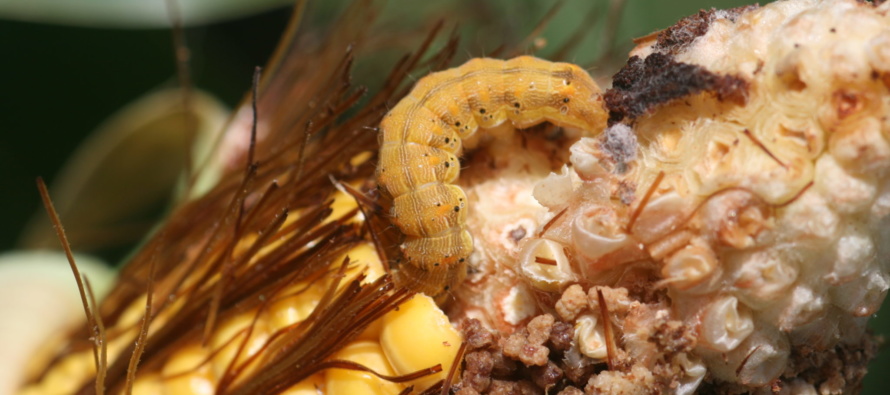Corn Earworm and Bt Field Corn

Related Articles
- 2010 Soybean And Corn Variety Trial Data 3
- Mississippi Cotton Insect Situation of 2010: A Look Back 3
- Rice Insecticidal Seed Treatment Recommendations for Mississippi in 2011 0
Latest Tweets
The number of commercial corn hybrids expressing the Vip trait (Leptra, Viptera, and Trecepta) is increasing, and they are being marketed for improved control of ear feeding insects, including corn earworm. We have been getting questions about these, and yes this trait is also expressed in three gene cotton (Bollgard III, TwinLink Plus, and WideStrike 3). The Mid-South Entomology Working Group has conducted studies from 2014 to 2018 to evaluate the performance of Bt corn traits and estimate the value of these to growers in our area. Currently, 72 trials have been conducted across Arkansas, Louisiana, Mississippi, Tennessee, and Texas. Planting dates for these ranged from within the optimum planting window to later than optimum. The hybrids in these experiments were in the same hybrid family to have similar yield potential and genetics, except for Bt traits. Both of the Bt hybrids had less kernel damage compared to the non-Bt hybrid (10.3 damaged kernels per ear) (Figure 1). Also, the hybrid expressing the Vip trait had less kernel damage than the hybrid with 2 Bt traits (Cry1F + Cry1Ab). When comparing hybrids with similar genetic backgrounds and yield potentials, there were no differences among hybrids for yield (Figure 2) or returns (all expenses being equal except for seed/technology costs) (Figure 3). Also, corn borers were not a factor in these trials. In another study the Vip expressing hybrid had >95% fewer damaged kernels (1.2) than hybrids expressing one Bt trait and the non-Bt hybrid (>22) (Figure 4). However, all hybrids had >130ppb aflatoxin. So how many damaged kernels per ear does it take to reduce yield? We conducted a study where a defined number of kernels were manually damaged. These ranged from 0 to 100 per ear, and the damage treatment was applied to every ear in a plot. Yield was significantly reduced only when kernel damage exceeded 40 kernels per ear on every ear (Figure 5). This is much greater than the number of damaged kernels from natural corn earworm infestations observed for the non-Bt hybrid (10.3) in Figure 1.
The primary targets for Bt corn were and still are corn borers, and all of the non-Vip Bt traits (single and multiple trait hybrids) perform very well against these pests. Protection against corn borers is the greatest value of Bt corn to growers in Mississippi, and many areas of the Mid-South. While, the benefit of minimizing corn earworm damage in ears is minimal at best.




Let me tell You a sad story ! There are no comments yet, but You can be first one to comment this article.
Write a comment